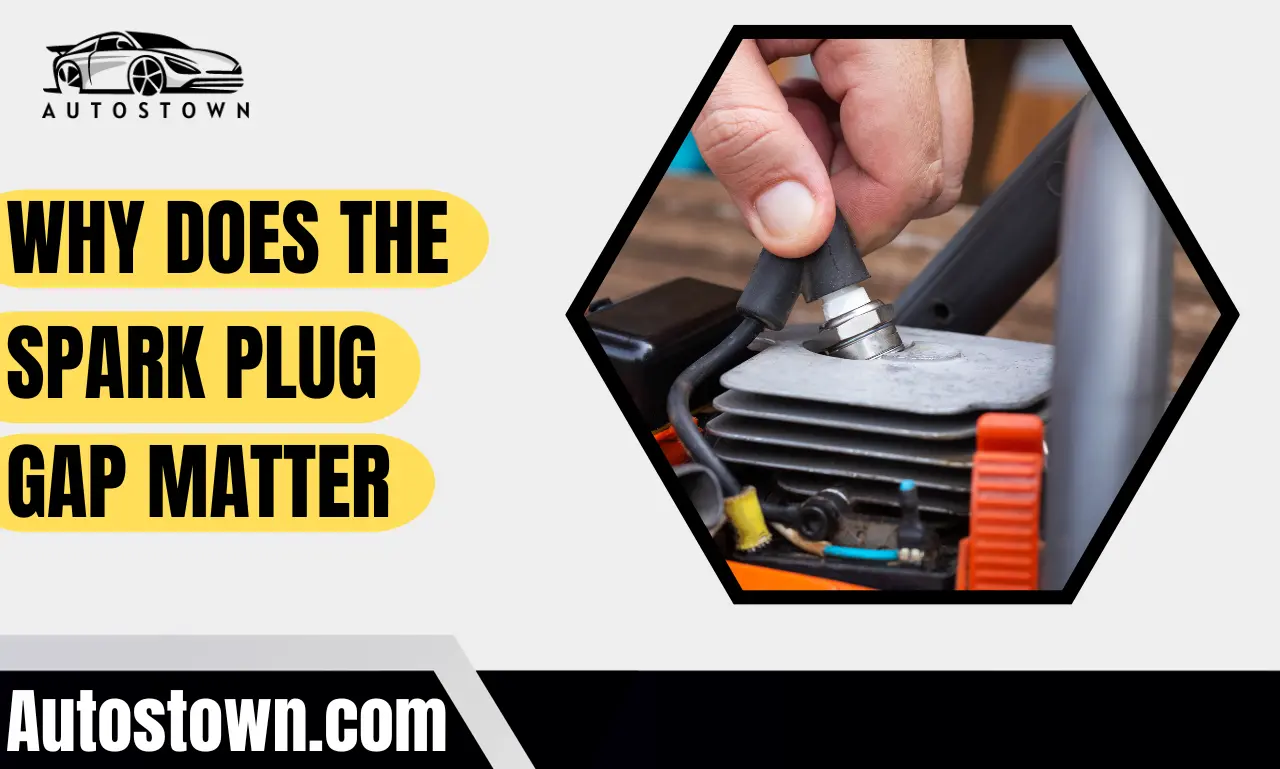Do you know how the engine in your car operates inside and out? You’re not alone if not. Many drivers are unaware of how important each part is to the overall operation of their car. One such element that is frequently overlooked is the gap between the spark plugs. You may be asking why it matters, but believe me when I say that the spacing between two metal electrodes in your car has a big impact on the power and efficiency of the ignition system. So fasten your seatbelts and prepare to delve into the world of spark plugs as we explore the significance of the spark plug gap.
Why does the spark plug gap matter
Despite being a minor part of the ignition system, the spark plug gap is essential to engine performance. The gap, which controls the magnitude of the electrical arc that ignites the fuel-air mixture, is the space between the spark plug’s center and ground electrodes.
More rapid and reliable sparking is made possible by a narrower gap, which also improves fuel economy and combustion efficiency. However, a wider spacing creates a broader electrical arc, which boosts horsepower and produces a stronger spark.
A spark plug gap that is too small or big might result in misfires or incomplete combustion, therefore it’s important to find a balance while changing it.
The ideal spark plug gaps can also be influenced by things like engine type and modifications, so before making any changes, it’s important to review the vehicle’s specifications or get expert guidance.
Symptoms of too much spark plug gap
There’s a chance that the space between the spark plug electrodes is too wide if you recently replaced your spark plugs and your engine isn’t running smoothly. Some signs that point to this issue are listed below:
1. Hard starting: When attempting to start an engine, a larger spark plug gap than is advised may make it more difficult for the ignition system to produce a strong enough spark.
2. Misfires: An excessive gap might result in incomplete combustion or misfires, which can make the engine stutter or hesitate while it accelerates.
3. Engine surging: When power delivery becomes erratic due to an excessively large gap, all cylinders may not fire consistently, resulting in engine surges.
4. Lower fuel mileage: Excessive gap sizes can lead to inefficient combustion, which lowers fuel efficiency and raises fuel consumption.
5. Engine running hot: Excessive air gaps might cause sparks to ignite at the wrong timing or intensity, which can lead to greater engine temperatures.
6. Lack of power: Engine performance and power output can be lowered by a weaker spark brought on by an excessive gap.
7. Increased emissions: During exhaust gas purification procedures, incomplete burning brought on by an incorrect spark plug gap may result in higher amounts of dangerous emissions.
8. Stalling at low speeds: If insufficient voltage is sent via an excessive air gap when braking or traveling slowly, your car may stall.
What causes spark plug gap to increase
Why Spark Plug Gap Is Important for your vehicle’s health and how you can determine if your spark plug gap is increasing?
1. Carbon deposits:
The buildup of carbon deposits is one of the most frequent causes of an increase in spark plug gaps. The spark plugs may wear down and the gap may widen as a result of residue left on them by gasoline and oil additives over time. This accumulation may obstruct appropriate ignition, resulting in engine misfires or decreased efficiency.
2. Wear and tear:
Normal wear and tear is another issue that causes the spark plug gap to expand. Over time, the gap between the spark plugs may increase as a result of the electrodes corroding from frequent sparking. Unfavorable driving circumstances, such a lot of stop-and-go traffic or prolonged high-speed driving, can hasten this wear.
3. Improper gaping during installation:
Spark plugs’ initial installation is essential to ensuring that they continue to operate as intended. They may have a larger gap size straight out of the gate if they are not installed properly, either by mistake or by using the wrong tools. An inaccurate gap reduces power output and fuel economy by adversely affecting combustion efficiency.
4. Overheating:
One more thing that contributes to wider spark plug gaps is overheating. The components of the spark plugs are subjected to additional stress when engines run too hot owing to a variety of reasons, such as improper fuel mixture ratios or problems with the cooling system. As a result, the spark plugs gradually expand and change shape.
5. Reduced electrode material:
Spark plug electrodes can bend with continued usage and time, leaving a wider space between them. There are a few possible reasons for this decrease in electrode material: erosion from high voltage, corrosion from coolant or engine oil leaks, or just plain old wear and tear. The gap widens as the electrodes wear out, which may cause misfiring and decreased engine performance.
Is a spark plug gap better tighter or wider?
Improved combustion efficiency is the result of a stronger, more concentrated spark produced by a tighter spark plug gap. This may result in more power output, more fuel efficiency, and more seamless engine functioning. It is important to remember, nevertheless, that an overly tight spacing might result in misfires and early wear and tear on the ignition system’s parts.
A greater spark plug gap, on the other hand, encourages the burning of a larger flame kernel. In engines with forced induction systems or higher cylinder pressures, this aids in the more efficient ignition of air-fuel mixtures. A larger spacing also reduces the possibility of fouling brought on by carbon buildup or oil deposits on the electrode tip. For a reliable ignition function, it is imperative to keep the voltage at a suitable level over a longer distance.
Conclusion
For an engine to operate properly, the spark plug gap is essential. It can have an impact on power output, fuel efficiency, and overall performance. It directly affects the ignition process. Sustaining the appropriate spark plug gap guarantees that the air-fuel mixture may be ignited successfully and efficiently by the spark. Ignoring this seemingly insignificant but crucial element can result in engine damage, misfires, and even total engine failure.
As a result, it is crucial that all car owners periodically check and adjust their spark plug spacing in accordance with manufacturer guidelines. They can increase the longevity of their engine and maximize its performance by doing this. Make sure your car is operating at its peak performance by taking action right away and don’t underestimate the importance of the spark plug gap!
FAQs
1. And what if the spark plug gap is too narrow?
When the gap is too narrow, it can lead to insufficient ignition energy, misfires, rough idling, poor acceleration, and potential damage to both plugs and ignition coil.
2. Why does the spark plug gap matter?
The correct spark plug gap is crucial for efficient combustion in an engine. It affects ignition timing, fuel efficiency, and overall performance.
3. How does a wider or narrower spark plug gap impact performance?
A wider gap may result in better combustion, leading to increased power but also higher stress on ignition system components. Conversely, a narrower gap can improve reliability but may reduce power output.
4. Can I adjust the spark plug gap myself?
Yes, you can adjust the gap using a feeler gauge or spark plug gapping tool. However, it’s important to consult your vehicle’s manual or a professional to ensure proper specifications are met.
5. What happens if the spark plug gap is too wide?
If the gap is too wide, it can cause misfires, poor combustion, reduced power, and potential damage to ignition components due to increased voltage requirements.

